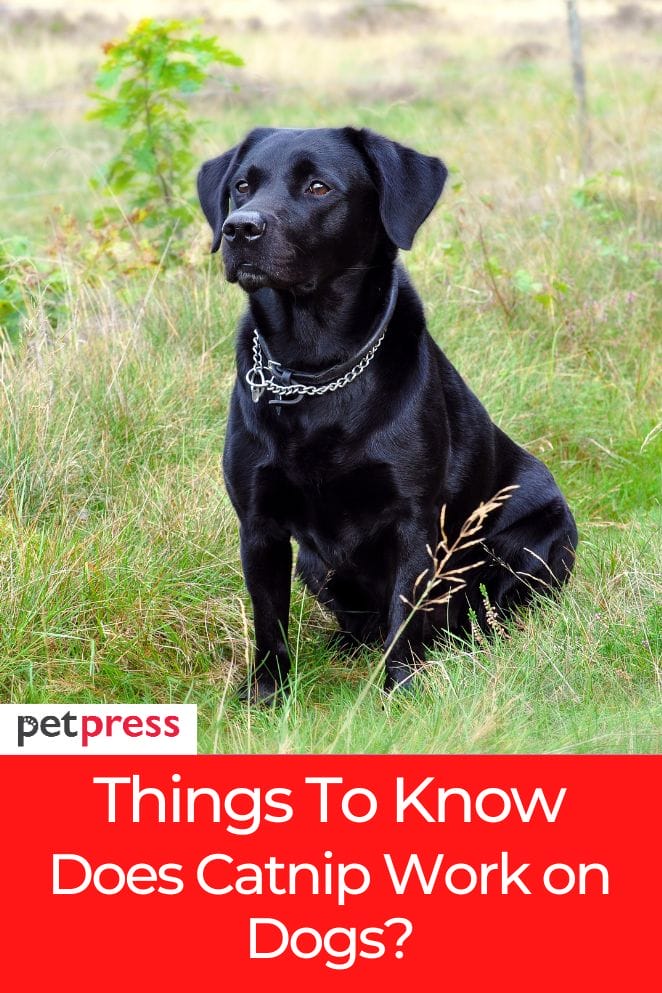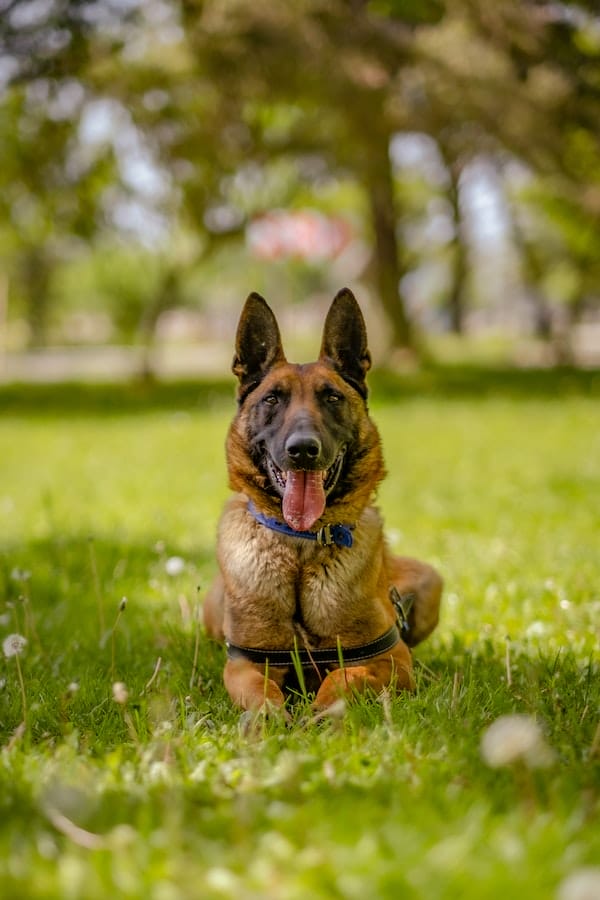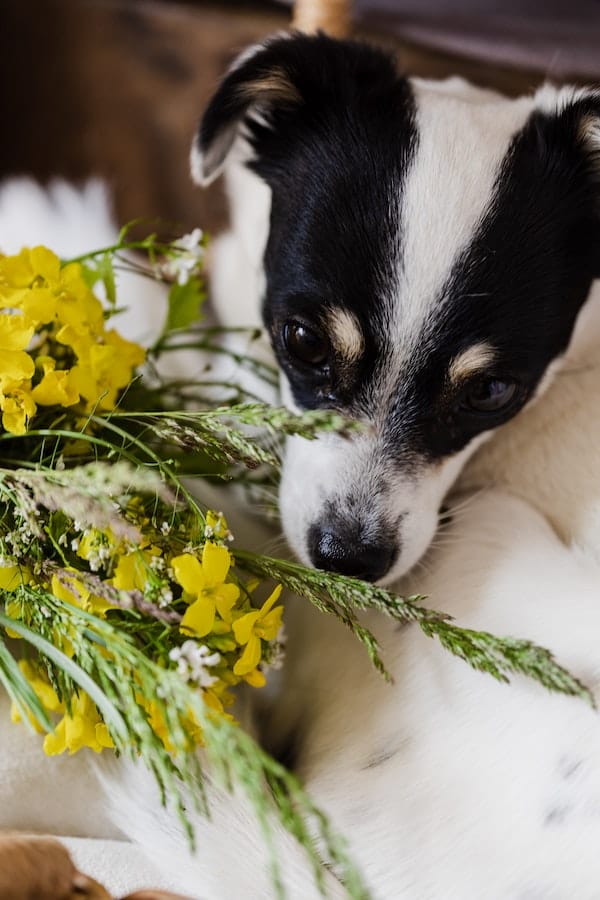
Catnip is a perennial herb that is well known for its intoxicating effect on cats.
But did you know that it may also work on dogs?
While not all dog breeds will react to catnip, studies have shown that certain breeds can be affected by it in the same way as cats.
This article will explore whether or not catnip can work on dogs, and which breeds are more likely to have a reaction.
We will also look at the potential risks of giving your dog catnip so that you can make an informed decision as to whether or not it is something you would like to try with your pet.
What are the potential risks of giving your dog catnip?

If your dog does respond to catnip, it is important to remember that it can still pose a number of risks. These include:
Increased hyperactivity
When dogs react to catnip, it can cause them to become more active than usual.
This increased energy and hyperactivity can lead to destructive behavior such as tearing up furniture or clothing, jumping on people, and barking excessively.
It is important to monitor your pet closely if they have been exposed to catnip and take steps to ensure that they do not become overwhelmed by their own energy levels.
If you are concerned, it is best to limit the amount of catnip your dog consumes and remove any potential sources of stimulation such as toys or food treats.
Dangerous behavior
In some cases, a dog’s reaction to catnip can be more serious than simple hyperactivity.
Some dogs may become aggressive or attempt to bite if they become overexcited while under the influence of catnip.
This behavior is particularly risky for other pets and children in the home, so it is important to take extra precautions when giving your dog catnip and ensure that they are properly supervised.
If the behavior becomes dangerous or unmanageable, it is important to remove all sources of catnip immediately and seek professional help.
Nausea and vomiting
Another potential risk associated with giving your dog catnip is nausea and vomiting.
This can be caused by the ingestion of large amounts of catnip, as well as from inhaling it in an enclosed space.
If your pet appears to be unwell after having been exposed to catnip, it is important to seek veterinary advice immediately.
Stomach upset
In addition to nausea and vomiting, another potential side effect of catnip is stomach upset.
This can manifest as diarrhea, constipation, or loss of appetite.
If your pet experiences any of these symptoms after being exposed to catnip, it is important to seek immediate veterinary attention.
What breeds are affected by catnip?

Not all dog breeds are affected by catnip in the same way, with some being more sensitive than others.
Generally speaking, larger and herding breeds tend to be more receptive to the effects of catnip. These breeds include:
German Shepherds
German shepherds are one of the most commonly affected breeds when it comes to catnip, with many individuals responding strongly to the herb.
When exposed to catnip, German shepherds may become excited and appear more active than usual.
Huskies
Huskies are another breed that often responds strongly to the effects of catnip.
It is not uncommon for huskies to become extremely energetic when exposed to the herb, and they may also be more inclined to bark and chew on objects.
Labrador Retrievers
Labrador retrievers are another breed that may respond strongly to catnip.
Like with other breeds, Labrador retrievers may become overly active and more easily excitable when exposed to the herb.
Golden Retrievers
Golden retrievers may also be affected by catnip, though typically they are not as sensitive to it as other breeds.
When exposed to the herb, golden retrievers may become slightly more active than usual and appear more enthusiastic and alert.
Rottweilers
Lastly, Rottweilers may also be affected by catnip, though typically not as strong as some other breeds.
When exposed to the herb, Rottweilers may become more active and alert than usual, but they are not usually prone to overactivity.
Smaller breeds such as Chihuahuas, Poodles, and Toy Pinschers typically do not react at all.
It is important to keep in mind that a dog’s individual response to catnip can vary greatly, and some may not be affected at all.
Tips for administering catnip to your dog safely

There are a few tips to keep in mind when using catnip with your dog. These include:
Administering the herb in small doses
When administering catnip to your dog, it is important to do so in small doses.
This can help to reduce the risk of any side effects and ensure that your pet remains comfortable and safe.
Additionally, because cats and dogs respond differently to the herb, it is important to monitor your pet for any changes in behavior or activity level after the catnip has been administered.
Monitoring for side effects
It is also important to monitor your dog for any signs of discomfort or adverse reactions after giving them catnip.
This can include excessive drooling, vomiting, diarrhea, itching, or other physical symptoms. If you notice any of these, it is important to contact your veterinarian immediately.
Ensuring that your dog does not have access to large amounts of catnip
It is important to ensure that your pet does not have access to large amounts of catnip.
If they do, they may be at risk of experiencing more severe side effects, such as seizures or hyperactivity.
It is also important to keep the catnip in a secure location, as dogs may be tempted to eat it if given the opportunity.
Avoid giving catnip to very young puppies
It is important to avoid giving catnip to very young puppies.
The herb can be toxic in large doses, and may not be safe for dogs under the age of 6 months.
Additionally, cats and dogs respond differently to the herb, so it is important to monitor your puppy closely for any changes in behavior after giving them catnip.
Keeping fresh catnip in a cool, dry place away from your pet’s reach
Lastly, it is important to keep any fresh catnip in a secure location.
Catnip can easily lose its potency when exposed to light or moisture, so it should be stored in a cool and dry area away from your pet’s reach.
Additionally, it is important to make sure that the catnip you are using has not expired or been contaminated in any way.
Conclusion
Catnip can be a fun and safe way to help keep your dog active and alert.
However, it is important to remember that cats and dogs respond differently to the herb, so it is important to monitor your pet closely for any side effects or reactions after giving them catnip.
Additionally, it is important to keep the herb in a secure location and to avoid giving catnip to very young puppies.
With these safety tips in mind, your pet can enjoy the benefits of catnip without any negative effects.


GIPHY App Key not set. Please check settings